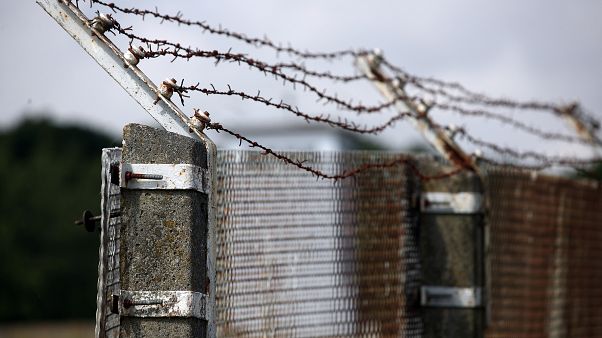Alice Tidey

 |
| The "Borderland Trail", a cross-national circular trail with original GDR border barriers, pictured near Teistungen, Germany, August 4, 2019. -
Copyright
REUTERS/Michael Dalder |
In the three decades since the fall of the Berlin Wall, European countries have built about 1,000 kilometres of border walls and fences.
That amounts to six times the length of the Berlin Wall, the Amsterdam-based Transnational Institute (TNI) flagged in a new report on Tuesday, adding that most have been built since 2015 when Syria's civil war — and the migrant crisis — was at its height.
"This time Europe is divided not so much by ideology as by perceived fear of refugees and migrants, some of the world's most vulnerable people," the report notes.
Newly-built barriers are in locations across the continent, including:
- the Spanish autonomous cities of Ceuta and Melilla, both in northern Africa;
- between Turkey and Greece, and Turkey and Bulgaria;
- between Greece and North Macedonia;
- between Hungary and Serbia, and Hungary and Croatia
- between Russia and Latvia, Norway, Estonia and Lithuania;
- in Calais, France.
€17.5 billion
"Land walls and fences on European borders are the most visible aspects of Fortress Europe. By themselves though, they are mostly symbolic," the TNI stresses.
It adds that these physical walls and fences are accompanied by maritime borders — naval operations patrolling the Mediterranean extending another 4,750 kms — as well as virtual borders — border-control systems seeking to stop people entering or even travelling within Europe.
The research institute estimates that the global market for border security was worth approximately €17.5 billion in 2018 and projects it will grow by an annual 8% annually in the coming years.
EU countries, meanwhile, are believed to have spent between €900 million and €1 billion on land walls and fences since the Cold War. Adding to that was money spent by the bloc's External Borders Fund (€1.7 billion between 2007 and 2013) and the Internal Security Fund (€2.76 billion between 2014 and 2020).
The European Commission has also planned to earmark €9.3 billion for the 2021-2027 period as part of a new Integrated Border Management Fund.
The primary beneficiaries in Europe have been companies including Thales, Leonardo and Airbus which all produce equipment used for land and maritime border patrolling including helicopters but also sensors and radars.
Spanish firm European Security Fencing was also identified as a key player. It produces razor wire and in particular a coiled wire known as concertinas that is used around Ceuta and Melilla, Calais, as well as along the Hungary-Serbia, Bulgaria-Turkey, and Austria-Slovenia borders.
For the TNI, "everything points to a further heightening and strengthening of the walls of Fortress Europe." This is turn will lead to refugees and migrants "to take more risks to cross borders, to encounter violence, and to end up living 'illegally in dire circumstances or in detention, awaiting deportation to unsafe countries of origin".
It argues that pouring more money will not solve the issue and might even exacerbate it.
'False feeling'
Meanwhile, Istvan Viragvolgyi, the curator of an exhibition entitled "Walls of Power" which explores man-made barries in Europe, told Euronews about walls of segregation. These are barriers within a society.
An example he flagged is a picture from Slovakia where locals collected money and lobbied the authorities to erect a wall separating them from a Roma settlement.
"They (Roma people) have to walk around the wall because it's not a complete wall. It's just a couple of hundred metres and then you actually walk around it. They just diverted the traffic basically so the Roma people going into the town, they diverted them around their houses," he said.
"In human history, all the walls that were built were demolished," he stressed. "Maybe (it took a) longer, shorter time but eventually they were all demolished. So we really have to think about what the real problem is and somehow come up with a solution."
"I think we have the false feeling that we dealt with the problem already and it's behind us," he concluded.
6/11/2019
